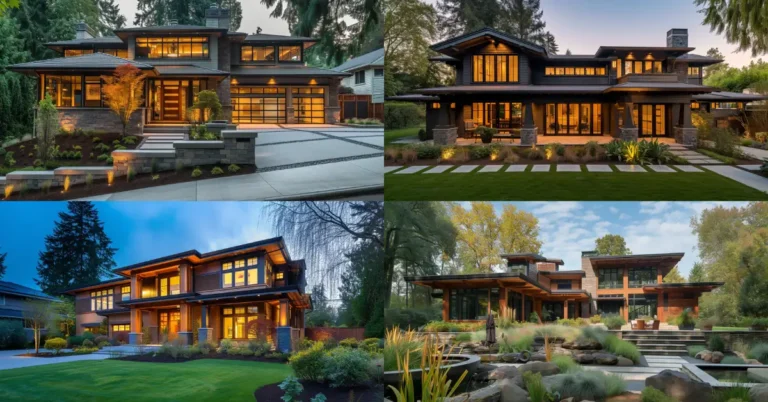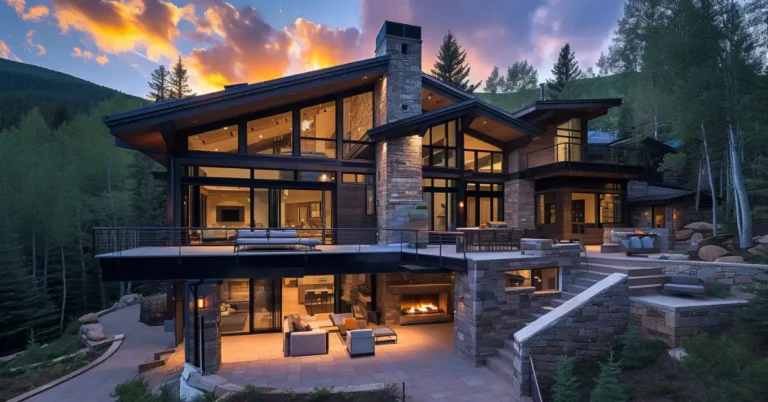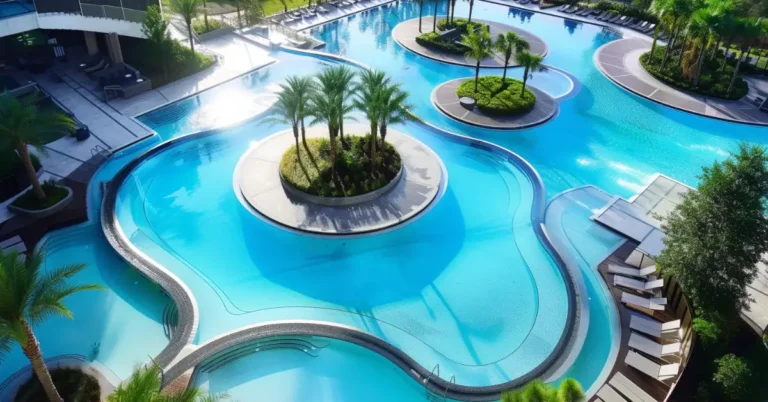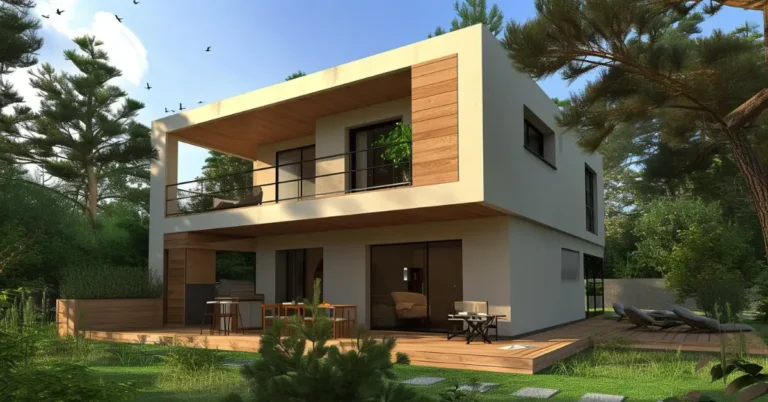Dive into the world of the 70s contemporary house, an architectural style that revolutionized residential living with its bold lines, open spaces, and a fusion of form and function. These homes were not just structures, but manifestations of an era in the world of the 70s contemporary house, an architectural style that revolutionized residential living with its bold lines, open spaces, and a fusion of form and function. These homes were not just structures, but manifestations of an era spirit, offering a blend of modernism and warmth. ‘s spirit, offering a blend of modernism and warmth.
What is a 70s Contemporary House?
When we think about a 70s contemporary house, we’re immediately transported to an era where bold expressions in both architecture and interior design were the norm.
In these homes, we saw an outpour of innovative layouts, a blend of materials, and an openness that broke the conventions of traditional home designs of previous decades.
Features of 70s Contemporary Houses:
| Element | Description |
|---|---|
| Architecture | Open floor plans, split levels, and clean lines |
| Materials | Use of natural wood, stone, and glass |
| Color Palette | Earthy tones mixed with vibrant accent hues |
| Layouts | Integration of indoor and outdoor spaces |
| Furnishings | Functional, often with a futuristic or mod twist |
These houses often celebrate spaciousness and natural light, with large windows and sliding glass doors standard. We see multi-level living with rooms flowing into one another, anchored by focal points such as central fireplaces or atriums.
Our imaginative spirits can’t help but be thrilled by the artistic freedom that was exercised in creating the distinctive features of 70s contemporary homes, from striking geometrical forms to the groovy and unorthodox use of textures and patterns. It’s these qualities that make the 70s contemporary house a sought-after vintage aesthetic even today.
Innovative Architecture and Design
As enthusiasts of the distinct 70s contemporary house, we’re thrilled to explore the era’s inventive approach to architecture and design that reshaped our living spaces.

Hallmarks of 70s Architectural Style
The 70s were marked by a bold departure from tradition, introducing houses that weren’t just structures but statements.
- Geometric Forms: Think circular windows and asymmetrical shapes.
- Integration with Nature: Homes were often nestled into surroundings, blurring the lines between indoors and outdoors.
The Revival of Open Floor Plans
Open floor plans became a signature of 70s contemporary homes, offering a sense of freedom and space.
- Fostered Social Interaction: Rooms flowed into one another, eliminating barriers between living areas.
- Adaptable Spaces: Flexibility for homeowners to tailor their living environment.
Natural Light and Window Design
Windows were more than just glass barriers; they became a focal point that brought the concept of natural light into the architectural design. These practices included:
Skylights and Sunken Living Rooms: Innovative ways to flood homes with daylight.
Window Walls: Large glass panels that connected residents with the landscape.
Iconic Interior Elements
When we think of a 70s contemporary house, iconic interior elements immediately spring to mind.

Embracing Shag Carpets and Bold Wallpaper
- Shag carpet: The deep, plush feel of shag carpeting was essential to the 70s living experience. Its cozy and stylish appearance made a statement in nearly any space.
- Bold wallpaper: We can’t get enough of the bold and often psychedelic wallpaper patterns that dominated 70s interiors. From flora and fauna to abstract prints, they captured the era’s love for expressive design.
Wood Paneling and Geometric Patterns
- Wood paneling: Adding warmth and a natural vibe, wood paneling adorned the walls of many 70s homes, becoming synonymous with the era’s design aesthetic.
- Geometric patterns: These patterns brought life to every corner of a 70s home, whether in the form of wall art, textiles, or furniture. Their crisp lines and shapes created the perfect contrast to the era’s softer textures.
Essential Spaces of Comfort
Reviving a 70s contemporary house, we have the pleasure of crafting spaces that encapsulate both comfort and style. From plush fabrics to iconic furniture pieces, every corner reflects the era’s charm, integrated with modern sensibilities.

Transforming the Living Room
In our living room, layering on textures and eclectic color schemes are paramount. Bold patterns paired with shag carpets create a cozy yet dynamic area. Furniture with clean lines, such as the iconic space-age swivel chairs, contrast the softness of the room, bringing that quintessential 70s vibe into the 21st century.
Developing Dynamic Dining and Kitchen Areas
For our dining room and kitchen, we focus on open-concept designs that promote sociability and functionality. The dining area features a statement-making oval table and chairs upholstered in vibrant, touchable fabrics like velvet or bouclé. The kitchen, with its terrazzo flooring, provides not only durability but also a playful nod to 70s style.
- Dining Table: Oval-shaped, rich wood veneer
- Chairs: High-back, velvet upholstery
- Kitchen Counters: Polished terrazzo
Luxurious Bedrooms and Bathrooms
We believe in creating a sanctuary in the master bedroom, where plush bedding and ambient lighting set a tranquil mood. Earth tones and natural materials honor the 70s aesthetic without sacrificing the elegance of modern design. The master bath takes a cue from the past with sunken tubs and bold wallpaper patterns but ensures today’s luxurious standards with updated fixtures and smart storage solutions.
- Master Bedroom: Earth-toned linens, wood panel accents
- Master Bath: Sunken tub, contemporary fixtures
Every space in our 70s contemporary house is designed with comfort at its heart, embracing the past while looking firmly to the future.
Renovation and Remodeling
As we explore the potential of a 70s contemporary house, it’s thrilling to reimagine spaces with modern functions while honoring the original architecture.

Strategies for Modernizing the Family Home
Open Floor Plans: We’re seeing walls come down to create expansive living areas. For instance, combining the living room, dining room, and kitchen can transform a segmented 70s layout into an inviting, communal space.
Natural Materials: Exposed wood beams and stone fireplaces are being restored to highlight natural elements, offering warmth and texture that were often celebrated in 70s design.
Kitchen Remodel: Kitchens are often the heart of the home; we love updating this space with both aesthetics and function in mind. A modern 70s kitchen remodel might include sleek countertops, stainless steel appliances, and bold backsplashes that reflect eclectic 70s trends while providing efficient workflow.
Integrating Technology and Eco-Efficiency
Smart Home Integration: Thermostats, lighting, and security systems can now be controlled through smartphones, a must-have for convenience and energy management in a 70s contemporary house.
Sustainable Solutions: Installing energy-efficient windows, solar panels, and eco-friendly insulation are key ways we can reduce the carbon footprint of our cherished 70s abode, aligning with today’s eco-efficient standards.
Landscaping and Exterior Transformation
We’re thrilled to dive into how we can breathe new life into a 70s contemporary house with strategic landscaping and exterior transformations. These changes not only enhance the beauty of the property but also contribute significantly to its value and curb appeal.

Creating an Inviting Outdoor Living Space
For us, the key to transforming any outdoor living space is to make it enticing and functional. Imagine a courtyard with indigenous plants that require low maintenance but offer high aesthetic appeal—picture flowering shrubs and ornamental grasses that give that pop of color and texture. We focus on creating a seamless flow from the inside out, integrating the courtyard with the indoor living space.
| Feature | Details |
|---|---|
| Plant Selection | Native, drought-tolerant species for easy maintenance |
| Seating Arrangements | Comfortable, weather-resistant furniture |
| Lighting | Energy-efficient LED lighting for evening ambiance |
| Paving and Pathways | Natural stone or pavers that complement the home’s exterior |
Exterior Makeover for Curb Appeal
First impressions are everything. The facade of our 70s contemporary house can go from dated to dazzling with the right touches. A coat of paint in a modern palette can do wonders—we’re thinking crisp greys or bold charcoals that contrast beautifully with the existing natural wood siding. And let’s not forget the power of wood accents, which can add warmth and character to the home’s exterior.
- Paint Colors: Select modern hues that highlight the house’s architectural lines.
- Wood Siding: Preserve or replace existing siding for an authentic touch.
- Landscaping: Well-manicured greenery that complements, not overshadows, the home.
These adjustments make the structure stand out in the neighborhood and become a place we’re proud to come home to. From the verdant landscaping to strategic paint choices, every modification we make is a step towards reviving that classic 70s charm with a contemporary twist.

My Personal Tips for Your Dream 70s Contemporary House
Check out my personal tips for you next dream 70s contemporary house!!
| Must-Have Elements | Description | Tips for Modern Flair |
|---|---|---|
| Earthy Color Palettes | Think avocado green, mustard yellow, and harvest gold. | Balance with neutral tones to avoid overload. |
| Accent Walls with Texture | Wood paneling or bold wallpaper are quintessentially 70s. | Opt for removable wallpaper for flexibility. |
| Statement Lighting | Oversized pendant lamps or track lighting are key. | Use LED bulbs for energy efficiency. |
| Vintage Furniture | Pieces with curves and tufted details evoke the era. | Reupholster with contemporary fabrics. |
| Mixed Materials | Combine wood, metal, and glass for an eclectic mix. | Choose high-quality reproductions. |
FAQ – 70s Contemporary House
What is a 1970s style house called?
1970s style houses are often referred to as Split-Level, Contemporary, or Ranch homes.
How do you make a 70s house look modern?
To make a 70s house look modern, consider painting the walls for a fresh look, replacing outdated flooring, and updating fixtures. Incorporating contemporary furniture and decor can also help modernize the space.
What architectural style was popular in the 70s?
The architectural styles popular in the 1970s included Colonial Revival, Ranch, Split-Level, and Contemporary homes, as well as Postmodernism and Brutalism.
What did houses look like in the 1970s?
Houses in the 1970s often featured distinctive design elements such as bold patterns, earthy color palettes, wood paneling, and shag carpets. Architecturally, they ranged from Colonial Revival to Ranch, Split-Level, and Contemporary styles, with open floor plans and large windows.
Enjoyed our blog post on “70s contemporary house”? We’d love to hear your thoughts! Drop us a comment below to share your impressions or experiences.
If you want to keep reading more from us, have a look at these articles.





